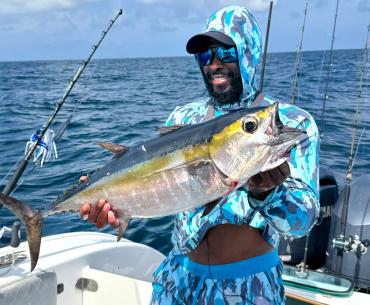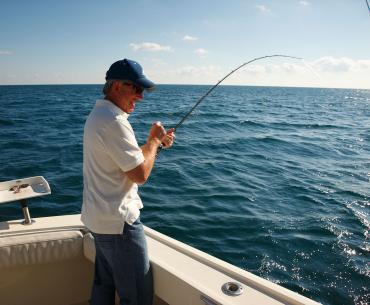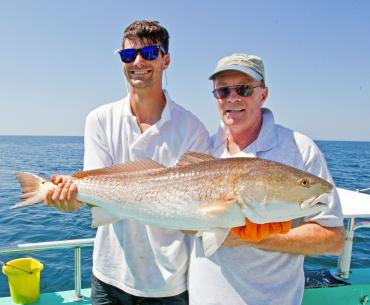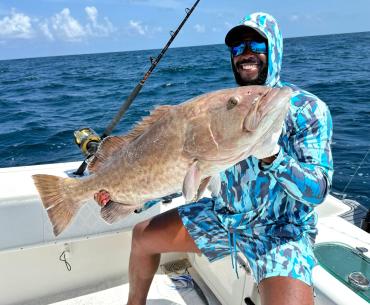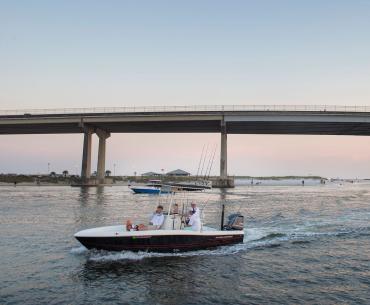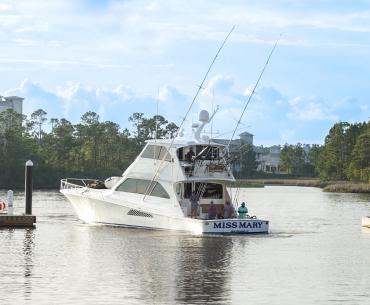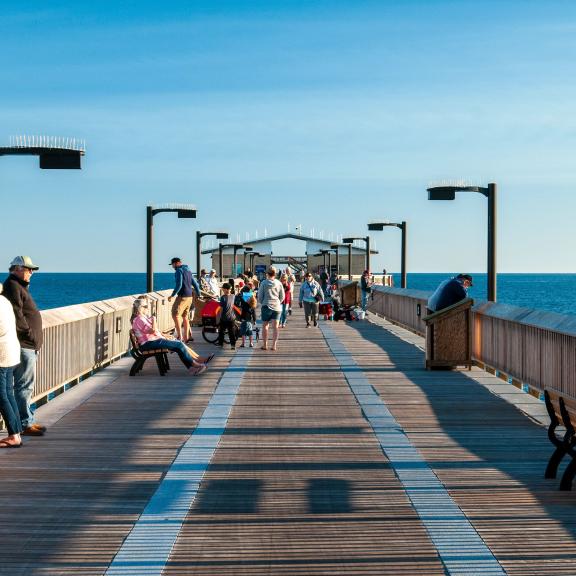
Although there is never a “sure thing” when it comes to fishing, the annual mackerel migration along the Alabama Gulf Coast is about as close as you can get. Spanish mackerel and their much larger cousins, king mackerel, start showing up off Alabama when the weather starts to warm in the spring and stay until October.
Fishing for King & Spanish Mackerel
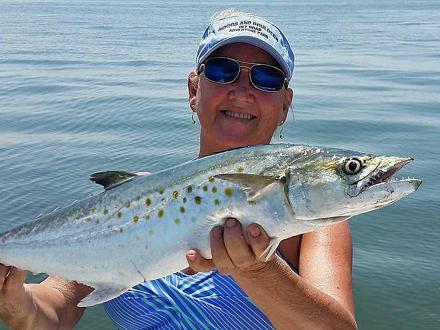
Best Time to Catch Mackerel
Best Time to Catch Mackerel
King mackerel is caught nearshore and offshore while Spanish mackerel can be found inshore and nearshore. Both species arrive to our shores in spring and stay until the weather begins to cool down in fall. The best times to target mackerel is July through September.
If you catch a decent-sized mackerel and you’re not sure what species it is, the easiest way to tell is to raise the dorsal (top) fin. If the flesh connecting the spines is gray, it’s a king. It’s a Spanish if that flesh is black near the long spine.
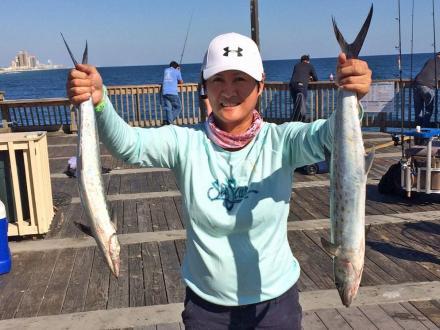
Pier Fishing for Mackerel
Pier Fishing for Mackerel
You don't even have to leave land to catch Spanish and king mackerel. The Gulf State Park Fishing and Education Pier is an excellent spot to cast off for mackerel in the fall as these species can still be found in our waters through October before migrating to warmer waters. You can bring your own gear or rent rods and reels from the bait shop, as well as all the bait and tackle you need.
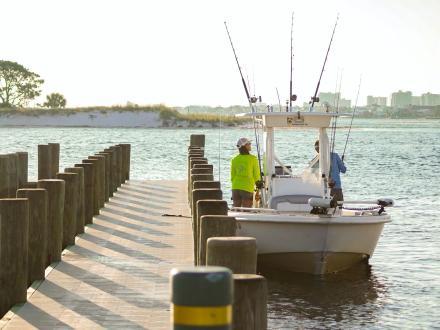
Mackerel Charter Boats
Mackerel Charter Boats
If you have some fishing experience and want to bring a seaworthy boat to fish the nearshore waters of the Gulf, the area within sight of Alabama’s sugar sand beaches are filled with mackerel. You can also book a charter boat and try your hand at targeting kings and Spanish mackerel. Your captain and deckhand will lead you to the best spots to catch these species and provide you with bait, tackle, and rods.
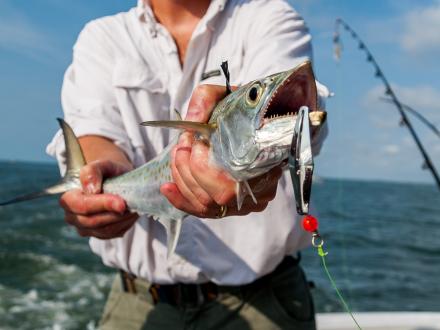
Trolling for Mackerel
Trolling for Mackerel
The great thing about fishing for mackerel is that several methods have proven successful. Straight trolling at seven to 10 knots with spoons, Halco or Clark, are very popular and can hook plenty of fish. For best results, the spoons should be deployed in an array that has the spoons fluttering at different depths from just below the surface to 5 or 6 feet deep. To keep the spoons down, you will likely need a planer with a lengthy leader. Some people will use a small, braided steel leader while others prefer to stick with monofilament in the 25- to 30-pound test range. Use quality black swivels to keep the fish from hitting hit gold-colored swivels and cutting the line. The swivels keep the lines from twisting. Stagger the distance behind the boat when the lures are deployed to keep the lines from tangling, especially when you’re making a turn.
Large crankbaits can also be trolled, although you may need to reduce your speed to keep the baits in the strike zone.
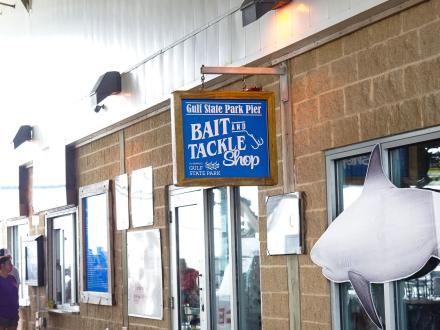
Best Baits for Mackerel
Best Baits for Mackerel
Not often, but sometimes mackerel won’t hit anything but natural baits, both live and frozen. For live bait, hardtails (blue runners), finger mullet or menhaden will work. Fresh frozen cigar minnows or ribbonfish (silver eels) with a duster can be the ticket
When using natural bait, one technique to use is what I call drift and bump. Drift with the wind and bump the motor in and out of gear. The bait will rise when the boat is in gear. When the motor is in neutral, the bait will slowly sink. Many fish prefer to strike when the bait is falling.
The area boasts a number of tackle/bait shops that will be able to outfit any angler with a variety of options for mackerel fishing. They will help you choose the correct planers and spoons, as well as terminal tackle and leader material. For Spanish, most of the time, a 25-pound-test monofilament or fluorocarbon leader is all you’ll need. If you run into a few king mackerel, you may have to switch out to wire leader.
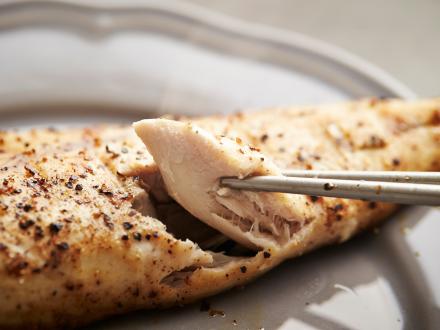
Spanish & King Mackerel Limits
Spanish & King Mackerel Limits
An abundance of king mackerel has allowed the daily limit to be raised to three per person per day with a 24-inch fork length minimum.
The daily creel limit for Spanish mackerel is 15 per person with no size limit. The only problem with that liberal creel limit is that mackerel are somewhat oily fish and don’t freeze well. The best thing to do is catch the fish and cook them as soon as possible. Many restaurants in the area have cook your catch specials, where they will cook your daily catch in a variety of delicious ways.
